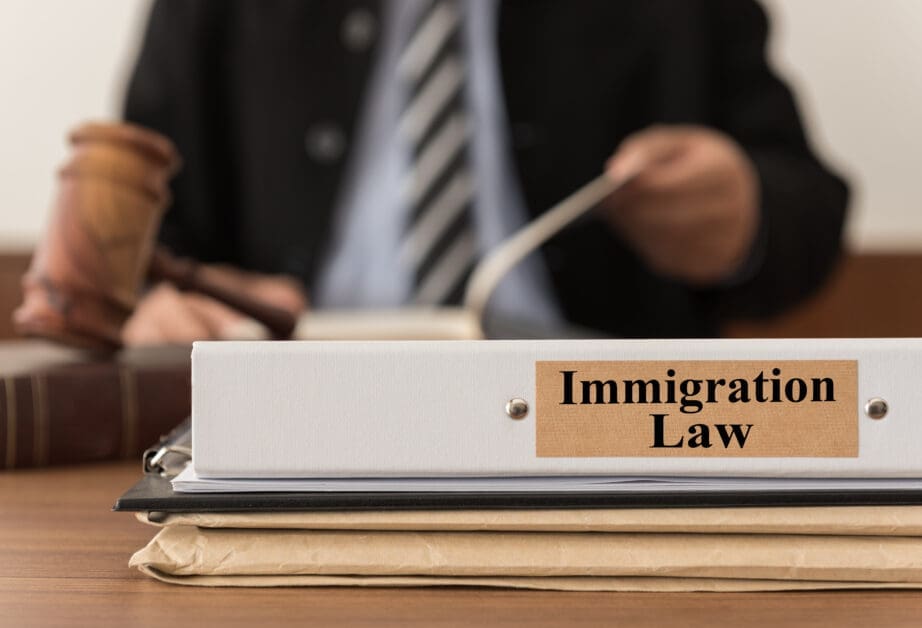The One Form That Puts You Back in Control of Your Immigration Case: Understanding the Form G-28
If you are a highly skilled professional navigating the U.S. immigration system, you know the process is built on anxiety. Your career, your family’s future, and your peace of mind are all tied up in complex bureaucratic procedures and mountains of paperwork.
When you hire legal representation, the expectation is that a portion of that anxiety is lifted. You expect clarity, proactive communication, and certainty. However, many successful professionals find themselves frustrated, relying on slow updates from a legal team that treats their life-changing case like a file number. The system is designed to keep you in the dark, and sadly, sometimes the communication structure only reinforces that feeling.
There is a simple, administrative form that acts as the legal cornerstone of your attorney-client communication, ensuring that government agencies talk directly to your legal representative and, crucially, that your case remains transparent: Form G-28.
This form isn’t glamorous, but it is powerful. It is the definitive line in the sand that separates chaotic, reactive legal service from confident, clear-eyed representation.
Why The G-28 Is Your Anti-Gatekeeping Weapon
At its core, Form G-28 (officially called “Notice of Entry of Appearance as Attorney or Accredited Representative”) is a piece of paper that serves one function: it formally tells U.S. Citizenship and Immigration Services (USCIS) or the Department of Homeland Security (DHS) exactly who your lawyer is and grants them permission to act on your behalf.
But for the client, the G-28 means so much more than a signature. It defines where the crucial, time-sensitive correspondence goes.
In the old, frustrating style of legal service, the attorney might view the G-28 as a mere administrative step. At Manifest Law, we view it as an explicit commitment to transparency.
The G-28’s Power to Protect the Client:
- Definitive Communication: When a G-28 is properly filed, all official correspondence—including dreaded Requests for Evidence (RFEs), Notices of Intent to Deny (NOIDs), and Notices of Approval—are sent directly to the attorney’s address. This ensures that a crucial piece of mail isn’t lost or delayed, which can derail an entire petition.
- The Power to Change Counsel: If you decide to switch legal representation, filing a new Form G-28immediately cancels the authority of any previous attorney regarding that specific case. This simple act is how you maintain control over your legal destiny, ensuring that your new, responsive legal team is the only one authorized to receive updates.
- Preventing Dual Communication: Without a clearly defined G-28, USCIS may confuse who they should be talking to, potentially sending critical notices to an outdated address or, worse, splitting communication between the client and the attorney. A complete and accurate G-28 ensures a single, streamlined channel for all official interaction.
This emphasis on control is vital, particularly for high-stakes filings like the EB-1A or EB-2 NIW, where every document and every deadline matters. The G-28 is the legal equivalent of opening the kimono: it forces clarity and responsibility onto the attorney’s office.
The Critical Role of the G-28 in Different Visa Types
The way the form G28 is filed often reflects the underlying power dynamics of the visa category itself.
Consider a professional pursuing an EB-3 visa. This path is employer-sponsored, meaning the employer often retains the legal counsel. The applicant, the talented professional, is often just the beneficiary. This arrangement can lead to a frustrating “black box” where the lawyer views their primary client as the employer, leaving the immigrant with sparse or delayed information. In this scenario, understanding how the G-28 operates—and ensuring you know that your attorney is legally representing your interests—is paramount to avoiding the feelings of powerlessness that define the traditional immigration system.
In contrast, self-petitioned visas like the EB-2 NIW or O-1A empower the immigrant to be the petitioner. Here, the lawyer works directly for the professional. The G-28 reflects this shift in control: the attorney files on behalf of the self-petitioner, cementing the relationship as a client-first dynamic, rather than an employer-first arrangement.
Whether your case is self-petitioned or employer-sponsored, the principle remains: the G-28 must accurately reflect who is being represented and who is responsible for receiving time-sensitive communication.
Practical Do’s and Don’ts for the Empowered Applicant
You deserve legal clarity. Don’t let this administrative requirement become a source of confusion. Use it as a tool for diligence, always adhering to the official filing guidelines.
- DO ensure your legal representative signs a separate G-28 for every different application (I-140, I-485, I-765, etc.). They must file a new G-28 for each form they represent you on.
- DON’T assume that filing one G-28 covers your entire portfolio of applications. If you file four forms, there should be four G-28s.
- DO ask for a copy of the signed form G28 immediately upon retaining legal counsel. Keep it with your case files.
- DON’T rely on a general verbal agreement. The G-28 is the only document the government recognizes as proof of representation.
- DO confirm the attorney’s address on the G-28 matches the address they use for all other forms. Consistency is key to avoiding administrative errors.
- DON’T let a new attorney file your new petition without ensuring they have properly withdrawn the previous representation if necessary.
For highly skilled immigrants, legal paperwork is not a passive process; it is an active one. When you engage an attorney with experience in complex, merit-based visas, the G-28 is the official document that seals the contract of responsibility. It is the assurance that when USCIS sends a critical RFE, it goes directly to the attorney who is focused on your success, not lost in a sea of corporate correspondence.
The U.S. immigration system may be frustrating and slow, but your relationship with your legal counsel should be radically clear and built on mutual commitment. The form G28 is merely an administrative step, but for the client, it represents the vital commitment to transparent and accountable legal advocacy.













